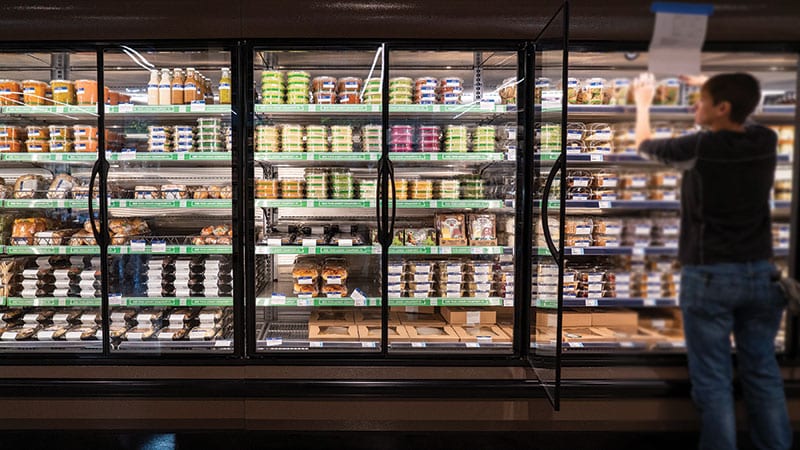Sustainability report: Cooling down climate change with better refrigerants
This article was originally published in July 2020

When we hear the words climate change, we often think of gas-guzzling cars and coal-fired power plants, not a refrigerator or air conditioner. But some refrigerants used to keep buildings cool and food fresh are extremely potent greenhouse gases. In fact, they can be more than 1,000 times more powerful than carbon dioxide at trapping heat in our atmosphere and causing global warming.
Project Drawdown, a research organization of over 100 global experts and scientists, ranked low-climate impact refrigeration as the #1 solution that can be applied to reverse climate change.
While gone are the days of cooling with ice blocks, PCC is looking back into history, and nature, to keep our foods fresh in our new stores. In our new Ballard and West Seattle stores, we installed carbon dioxide refrigeration systems, a natural refrigerant first used over 100 years ago. It has the lowest climate impact of any refrigerant on the market, having thousands of times less global warming potential than synthetic refrigerants found in most grocery stores today.
We aren’t just looking at our new stores—we are tackling refrigeration climate impacts across the co-op. In 2018 we pledged to reduce emissions associated with store refrigerant leaks in half by 2022. We partnered with one of the nation’s leading refrigeration experts to develop a robust sustainable refrigeration management plan for our existing stores that includes strategies to minimize leaks and transition to lower-impact refrigerants. We are using this plan to improve maintenance procedures for our stores’ cooling equipment and develop a roadmap to retrofit existing stores with more climate-friendly refrigeration systems. We’ve already reduced our refrigerant leaks by 266 pounds this year compared to 2017, which is a 5% reduction in our carbon emissions associated with refrigerants.
Policymakers around the world have worked for some time on reducing the impacts of refrigeration. In 2016, 170 countries gathered in Kigali, Rwanda and signed an agreement to achieve an over 80% reduction in HFC consumption by 2047. Global efforts to pursue this goal started going into effect in 2019. Washington state also introduced a law that will phase out HFCs in replacement of more climate-friendly alternatives. When fully implemented, this new law aims to cut Washington’s greenhouse gas emissions by 1 million metric tons of carbon dioxide a year, or the annual emissions of 217,000 cars.
Clearly, refrigerant management deserves serious attention. The good news is that there is a lot we can do to reduce the climate impacts of refrigeration. At PCC, it will continue to be among our top priorities.
